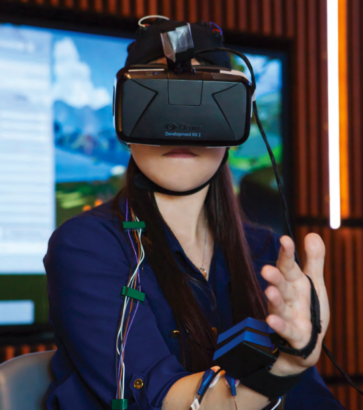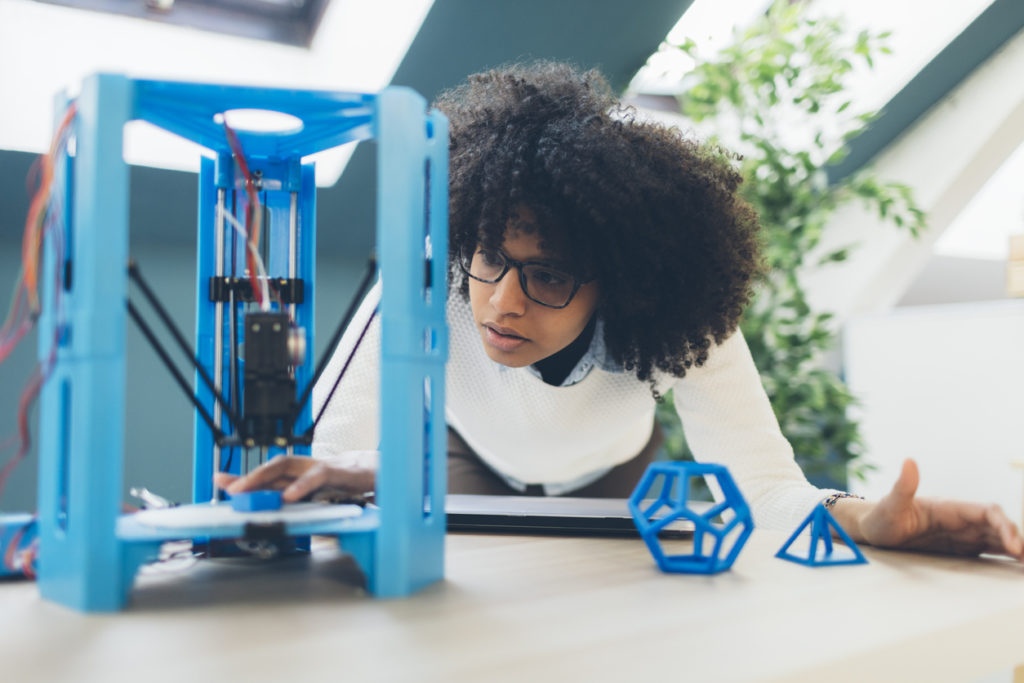Suffering a stroke instantly changes a life, and it’s even more challenging when complications such as motor impairment occur. Researchers with backgrounds in neural plasticity and mixed realities recently came together to develop a low-cost, virtual reality motor rehabilitation solution, and early results look promising.
Their idea? Leveraging neurofeedback in a virtual reality environment to promote brain recovery after a stroke.
“We hypothesize that the immersive component of virtual reality, and the embodiment of a virtual avatar, should generate greater brain activity in motor-related regions of the brain than simply viewing the same feedback on a typical screen,” said Sook-Lei Liew, researcher at the University of Southern California.
Here’s how it works: The system, REINVENT (Rehabilitation Environment using the Integration of Neuromuscular-based Virtual Enhancements for Neural Training), is an integrated hardware-software, brain computer interface that gathers data from muscle and brain sensors.
A brain computer interface can provide neurofeedback based on biological activity in the brain that can be measured with an EEG. This data is then used to control a computerized device, such as an object on a screen or in virtual reality.
The system integrates and analyzes the captured data in real-time to generate virtual reality feedback for participants. REINVENT provides augmented yet realistic, visual feedback of a user’s limb moving in virtual space, even if the patient isn’t moving in reality.
While the clinician instructs the user to imagine moving their arm, a variety of hardware is used to complete the brain computer interface:
- An OpenBCI EEG/EMG device (Figure 1 below), which captures data through sensors concentrated over the prefrontal and motor cortex on a neoprene cap. This picks up signals from the section of the human brain that deals with body movements and sends them off to a computer for processing.
- A wearable, forearm motion capture system (Figure 1 below), which captures slight arm movements from a wearer and informs the virtual reality scene. This data is sent to a computer.
- A computer, which is connected to the above devices to capture all relevant data. The computer analyzes data from the OpenBCI and wearable to create virtual reality feedback that is sent to the display unit.
- A head-mounted display, which presents the virtual reality environment and the virtual arm movements. This environment is created by combining neural and muscular feedback with augmented, but believable, movements in a virtual space.

Figure 1: Full REINVENT system
Photo by Nate Jensen at INN8creative.com
Visual feedback of an individual’s active limbs offers stroke patients the sight of a healthy body moving in response to their own brain activity, ultimately encouraging greater use of their immobilized limbs and motor rehabilitation.
Beyond inventing a novel solution for motor rehabilitation, the researchers were adamant about creating a device that would be accessible to a wider population. They leveraged the rapid popularity of virtual reality devices and their dropping prices to create a recovery tool at a significantly reduced cost (think a thousand dollars versus six figures).
“My hope is that the work we’re doing will contribute to the forces pushing commercial vendors to make more capable hardware that is available for less money,” said Ryan Spicer, researcher at the University of Southern California.
Preliminary data from healthy individuals revealed that controlling the brain computer interface in virtual reality leads to better and faster control of the neurofeedback. Compared to controlling the brain computer interface from a screen, there was also greater activity in motor regions of the brain.
Currently, the team is collecting and analyzing data between healthy individuals and those who have suffered motor loss after a stroke. These findings will allow them to compare brain activity patterns between groups and see whether, and how, REINVENT can be tailored to optimally elicit brain activity in those with motor loss.
“We’re working on the bleeding edge of technology and science – the ambitious goal of the project is to evaluate the use of lower-cost, off-the-shelf hardware to provide valuable biofeedback for motor rehabilitation,” said Spicer. “With decreased costs, there’s lots of potential for reaching a large group of people in need.”
Learn more about motor rehabilitation in IEEE Xplore.





